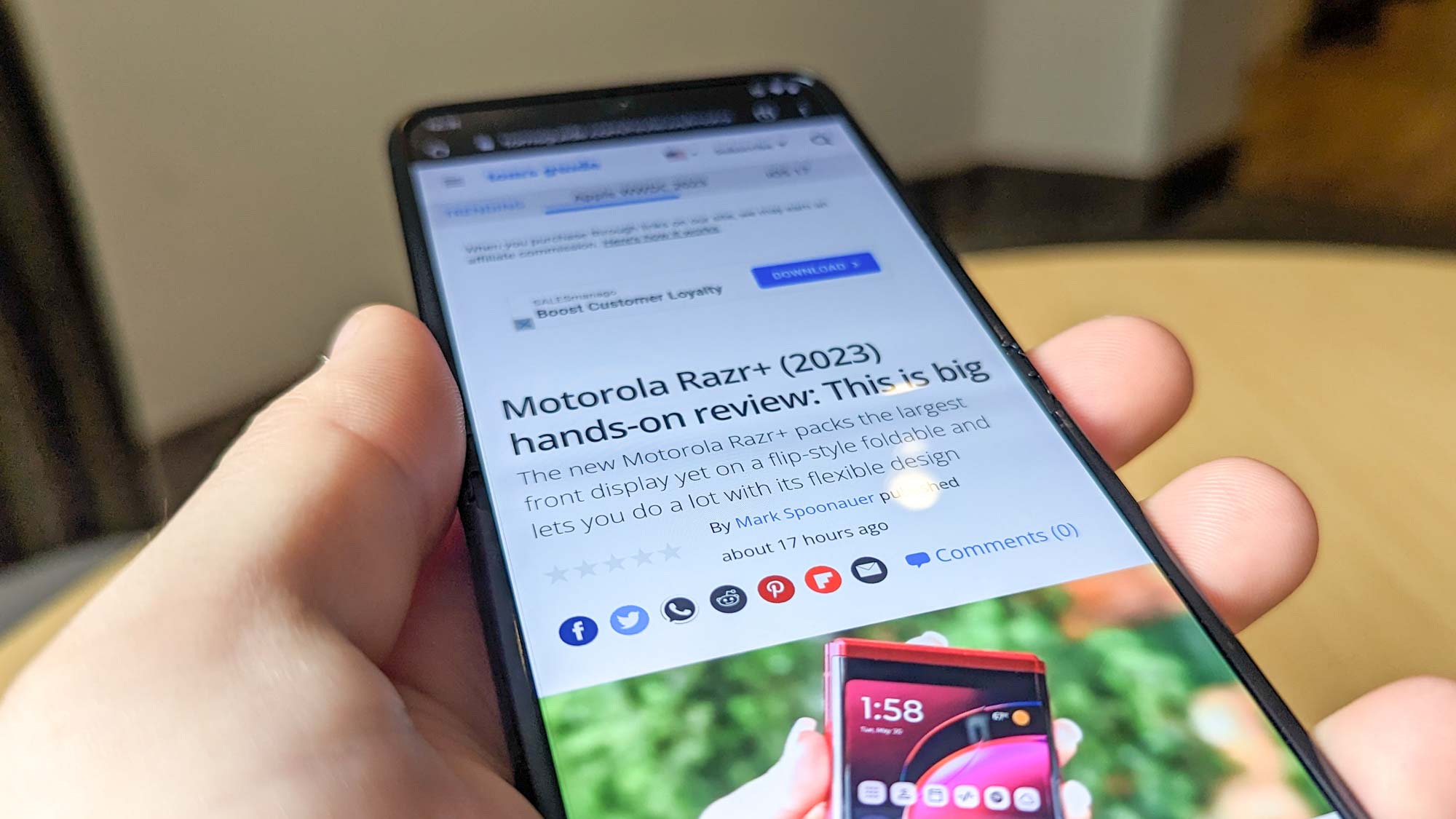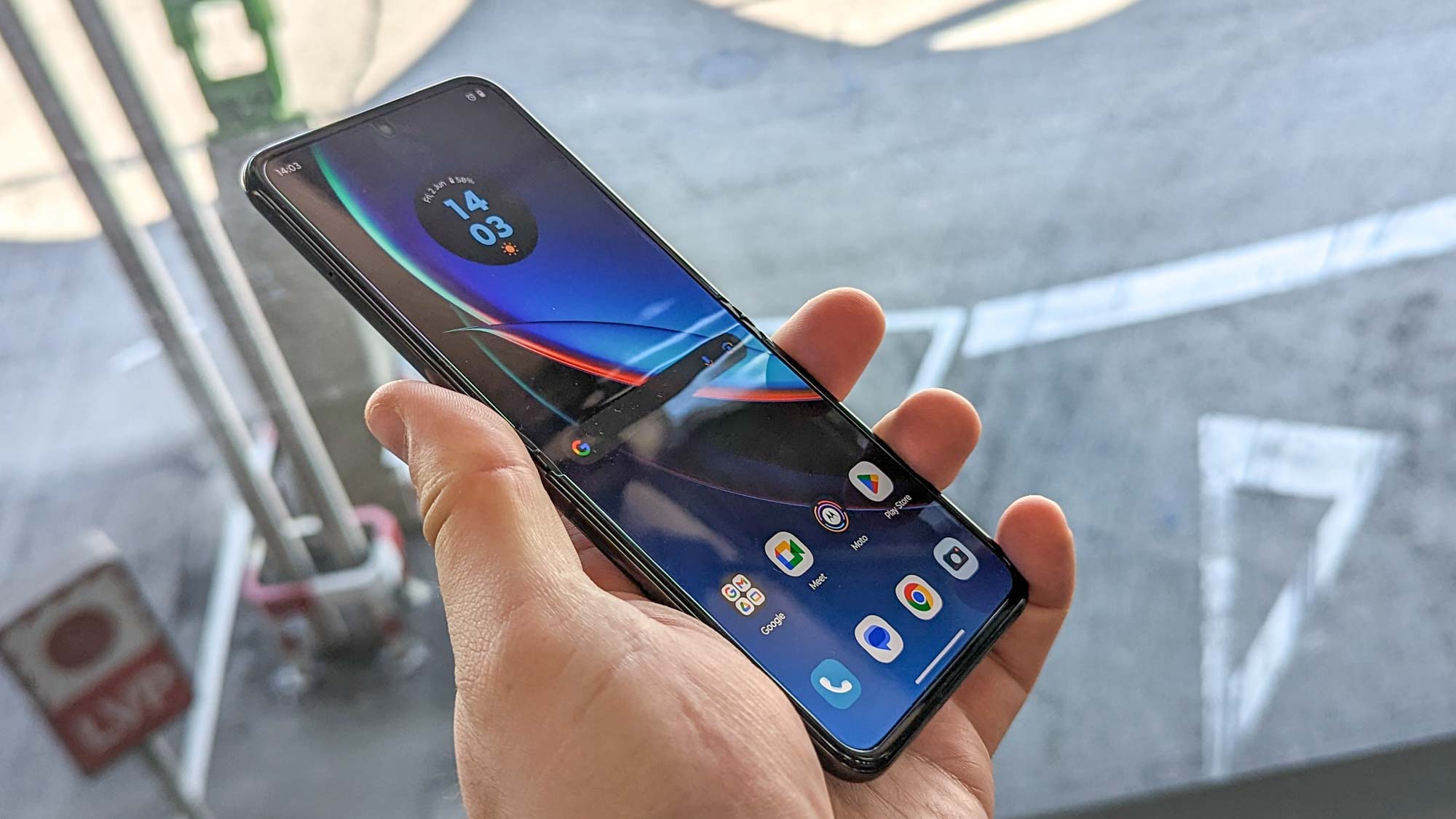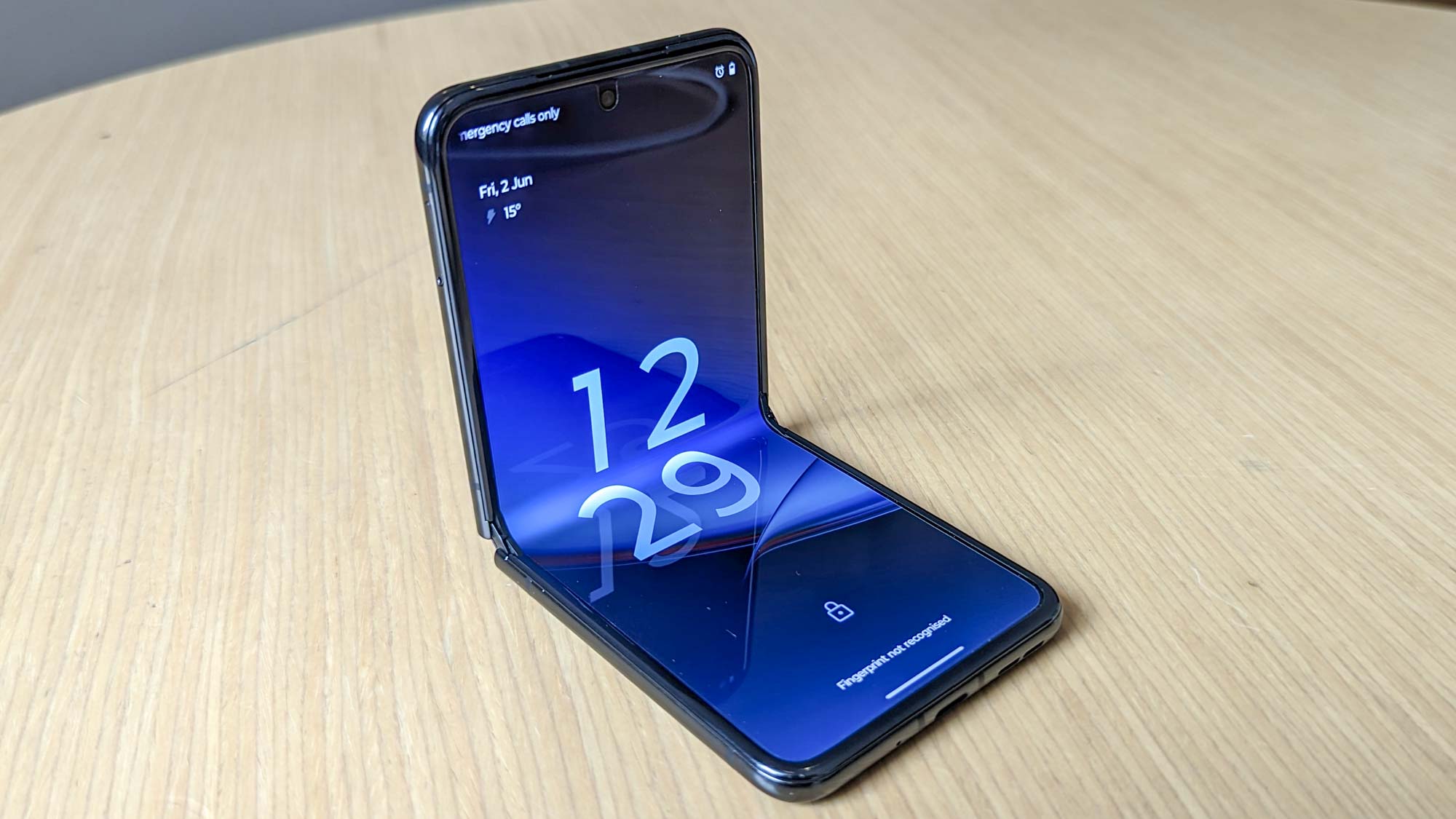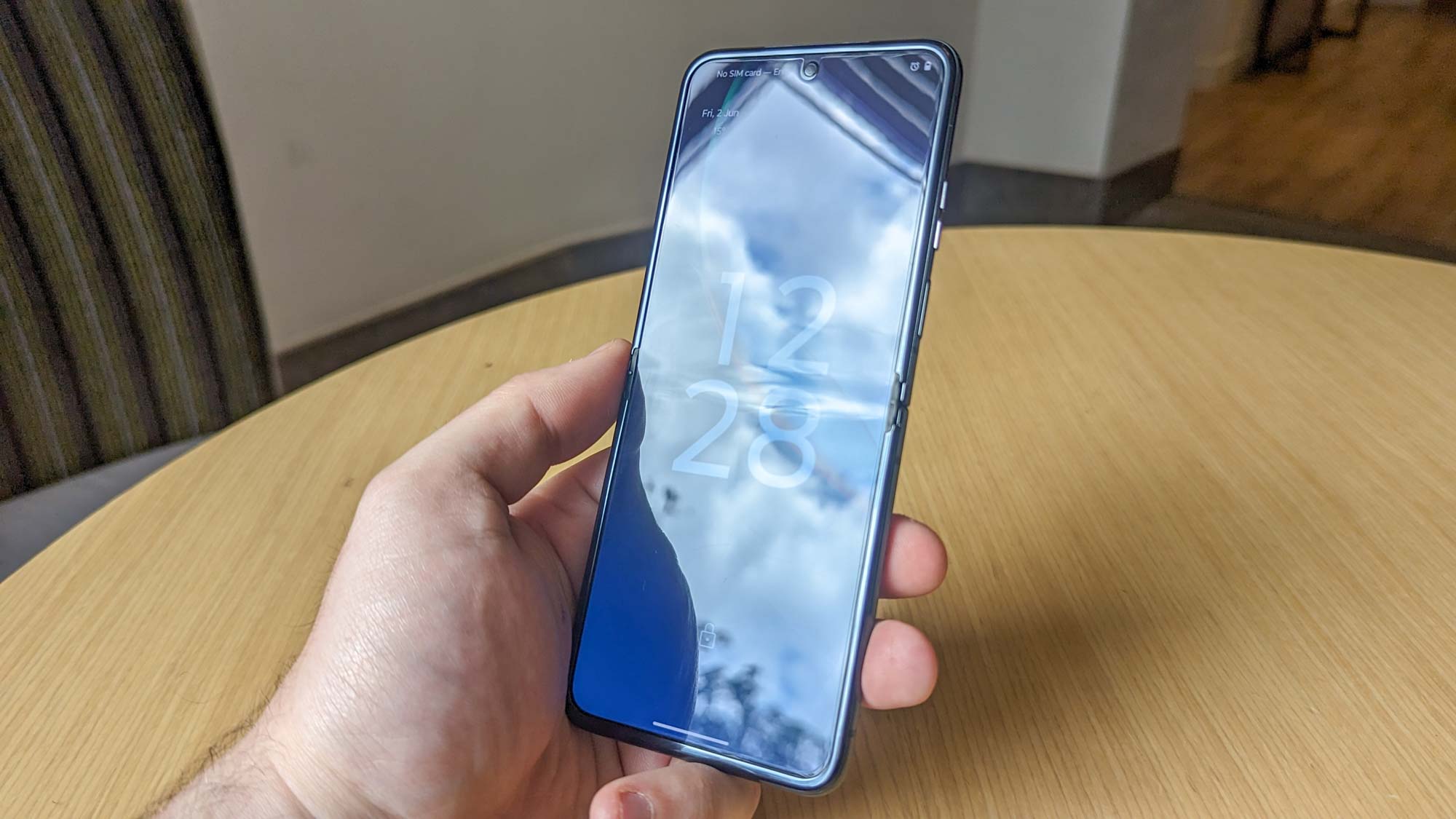The Motorola Razr 40 Ultra still struggles with the biggest foldable flaw
Motorola announced some new foldable phones last week. Over in the U.S. folks are getting the Motorola Razr 2023 and the Motorola Razr+, which will both arrive later this month. Meanwhile the U.K., where I’m based, the Motorola Razr 40 and Motorola Razr 40 Ultra are already on sale. So I’ve already been able to get my hands on the Ultra model to take it for a spin.
It’s not clear how closely the Motorola Razr 40 Ultra and Razr+ will match up, but if they are as similar as they appear at first glance, then the U.S. version should be a very nice phone. The Razr 40 Ultra is sleek, compact and its larger cover display is already proving to be very useful. The inner display is nice, too, though I’m still coming to grips with that insane 165Hz refresh rate.
Unfortunately, the Motorola Razr 40 Ultra still falls victim to the biggest issue facing foldable phones, whether they’re from Motorola, Samsung or whomever. And that’s the crease running straight through the middle of the phone that brings down the aesthetic appeal of these phones.
My Razr 40 Ultra’s crease has gotten a lot worse in a very short space of time

When I first switched on the Razr 40 Ultra, the crease in the screen was barely visible. In fact I would only see it from certain angles in bright light. For those few hours, I felt like the redesigned hinge on this phone was doing a good job.
The more I use the Razr 40 Ultra, the more visible the crease becomes.
The new “teardrop hinge” on the Razr 40 Ultra is now gapless, and has been designed to be thinner and easier to open. Initially I thought this redesign had also reduced the crease, but that assumption was slowly undone the more I used the phone — or more specifically putting that hinge through the works, by snapping the phone open and closed, as one does with a flip phone.
Over the course of a single day, the crease became a lot more visible. Now it’s quite difficult to miss where the flex is, subtle as it might be, particularly in areas that are well lit. Even if the bend in the display glass itself isn’t that obvious, you will be able to spot some of the warping on the screen below.
The Razr 40 Ultra’s crease isn’t always so immediately obvious, especially if you’re not in a particularly well-lit location. But it does seem to me that the more I use the phone, the more visible that flex becomes. The crease is also easy to locate by touch alone, and has been since I got my hands on the 40 Ultra — no doubt a downside of the hinge mechanism itself.
It might just be me. There’s a chance I’m simply more aware of the crease being there. But it definitely feels like the crease has become more visible over the past couple of days. Here’s hoping that whatever changes are happening stabilize pretty quickly.
The biggest issue — besides price

There are a bunch of challenges facing foldable phones these days. Price is the big one, as we’ve seen with the likes of the Samsung Galaxy Z Fold 4 and the Google Pixel Fold, the latter of which costs $1,799. Even the Razr+ will cost $999 when it goes on sale in the U.S., while the Razr 40 Ultra costs £1,049 in the U.K.. That means both phones cost roughly the same price as an iPhone 14 Pro in their respective regions.
Similarly, the hardware inside foldable phones tends to be much less impressive than a non-folding flagship. The Galaxy Z Flip 4 has dual 12MP cameras, for instance, while the Galaxy S23 has a triple lens system with 50MP, 12MP and 10MP lenses. Foldable designs also leave less space for big batteries, and often battery life is sacrificed as a result.
But the issue of the display crease is also rather obvious, and one that’s articulately unique to foldable phones. It’s an active consequence of having flexible display glass, rather than two standalone screens connected by a hinge, like the Microsoft Surface Duo 2.

There’s some progress being made in this area. One of the things we noted in our Oppo Find N2 Flip hands-on is that the display crease is rather hard to notice, even if you run your finger over it. Likewise, rumors claim that Samsung Galaxy Z Flip 5’s “waterdrop hinge” will help further minimize the crease when that phone makes its debut in July.
The technology apparently features a wider crease that’s much shallower, and a system that lets part of the screen fold into the display. That will apparently reduce the effect of bending on the screen, with some rumors claiming it will eliminate it completely — but we’ll believe that when we see it.
The sooner that happens the better, because creased-up displays are not nice to look at or scroll over. It may not be as much of a barrier as foldables’ relatively high price tags, but in an age where phones are as much a fashion statement as they are indispensable tools an ugly crease down the middle of the screen is going to put people off.
Bottom line
It’s worth mentioning that the Motorola Razr 2023 family is making a point of lowering the price for foldables. Or at least that’s the case with the entry-level Razr, which is expected to be the cheapest foldable to launch so far. Cheaper phones come with compromises, and drawbacks like the display crease are the obvious cost-cutting measures to include.

We certainly weren’t going to see Motorola spend countless dollars developing a new crease-free hinge and display for a device family that’s deliberately undercutting the competition. But it does perfectly highlight that more work needs to be done, because if the best foldable phones really want to gain mainstream adoption, they’re going to have to look good. And a phone with a creased-up display is far from that.
More from Tom’s Guide
For all the latest Technology News Click Here
For the latest news and updates, follow us on Google News.
